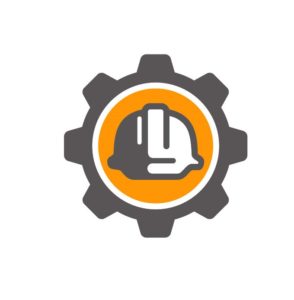
What’s the Purpose?
Being in business today requires that companies must have a Health and Safety program that it can produce to perspective clients for review. Quite often the submitted “Safety Program” items consist of a manual, WCB records and insurance certificates. That’s it, nothing more.
The subcontractor will submit these documents and wait to hear if they’ve been awarded the work, focusing on a bid amounts and material costs, not realizing that the H&S review of the bid submission carries (or should carry) a substantial portion of the decision. In order for the subcontractor to showcase their H&S program, it must show clear and structured workflows that make up it’s system for collecting, assembling and reporting on processes such as onboarding, training, new worker programs, competency workflow documentation, incident investigations and corrective action follow-up, and many others. When a prime contractor is able to verify that there are processes in place to address these concerns, you’re company gains a favorable position in the bid process.
Is your grass painted on?
Having looked over many H&S programs, I know it’s very easy to see if your program is designed for the checkbox style review where the criteria is simply if you have certain written policies and the minimal amount of documentation present. If you’ve submitted a program that doesn’t show any signed documentation, no corrective actions assigned and completed, SWP’s not reviewed or equipment inspection snags corrected and monitored, then you’ve just demonstrated that your grass is painted on. You have a Health and Safety program in name only.
When companies set out to grow their operations, one of the first elements that must be established is a health and safety program, but few companies start operations to build an efficient system, only building to a minimum level of being COR certified. COR certification does not necessarily mean that you have a strong system in place that has value beyond providing the ability to bid on projects and maybe qualify for WCB rebates.
We’ll upgrade later,…
At startup or early in a company’s growth, paper-based programs are established for several reasons:
- Online platforms are seen as hard to develop, implement and maintain.
- Companies want to start to bid on projects asap and electronic program development and implementation are seen as unnecessary obstacles. Paper forms are printed and distributed so that we can “Get going”.
- A safety program (printed manual) is purchased and will suffice for now, “We’ll change later.”
- H&S workflows are not in the picture as programs are not mature enough see the requirement for processes like onboarding, training certification monitoring, flag and follow-up of inspection items, reporting (Internally and Externally) of safety stats, etc. This will usually only surface at the first external audit three years down the road if the company still exists. Ad hoc paper elements are inserted along the way, adding to the resource requirements to continue along the fragmented path.
- No one on staff want’s to lead in the development of a digital program because it’s viewed as an expense that isn’t going to be recoverable.
Paper workflow
Take a few minutes and write down the workflow that occurs in bringing a paper-based document to life, distributed into your system, sorted and filed, and if required retrieved for reporting. An example would be a daily tailboard, where the site foreman completes and crewmembers sign, it’s then dropped off at the site office at shift’s end. The following morning, the site admin scans the document and places it in a folder, where it’s staged for any required report later on. This workflow is repeated for each paper document and each crew.
Now, there’s been an incident at one of your sites and you need to assemble all the documentation that show’s due diligence on the part of your company. Knowing how cumbersome the process is for retrieving all the paper documents and the completeness of each, how confident are you that you have everything you’ll need and in a legible condition to submit to the client?
Paper based systems have inherent issues due to the following:
- Dependency on individuals to complete accurately and legibly.
- Constant replenishment of forms that are distributed throughout the active sites.
- Maintaining current items on site requires physically updating and distributing documents throughout the company sites. Anytime, anything changes, you start this exercise again to stay compliant.
Estimate the manhours required to service a system based in paper, knowing that it is quick to “implement” but the output is lacking and requires resources to constantly perform maintenance to get mediocre results. Wouldn’t you rather take a few extra days to migrate this onto an online system and not have to deal with these issues any longer? Having built or migrated cloud based platforms for all sizes of companies, I’ve never had anyone say that they sure wish they could return to printing, scanning and filing all the paper that’s produced on a project using paper based workflows.


0 Comments